Thanks to Paul Thornley for clarifying the detail about Thomas Page as a Fellow of the Geological Society. Photographs by the author, except the historic print, courtesy of York Museums Trust (York Art Gallery), and the drawing of the collapsed bridge, courtesy of the YAYAS (Yorkshire Architectural and York Archaeological Society) Evelyn Collection (see bibliography). These should not be reproduced without written permission. You may use the other images without prior permission for any scholarly or educational purpose as long as you (1) credit the photographer and (2) link your document to this URL in a web document or to the Victorian Web in a print document. [Click on the images to enlarge them.]

View of Lendal Bridge from the railway bridge upstream (Scarborough Bridge)
Lendal Bridge, York. Architect and civil engineer: Thomas Page (1803-1877), opened 1863. Lendal Bridge is a single span of 53 metres made of cast iron; the landward parts are of gritstone (Pevsner and Neave 203).
History
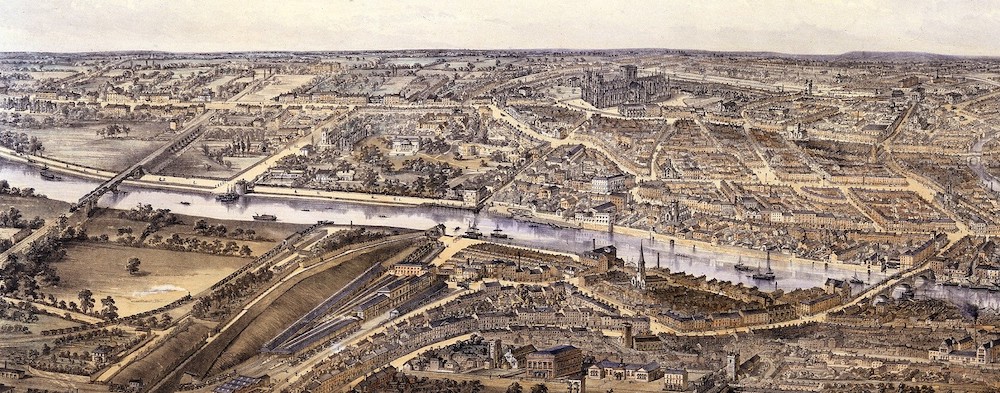
The River Ouse at York c. 1858, before the construction of Lendal Bridge. "Bird's-Eye View of the City of York," coloured lithograph, 1858, by John Storey, after Nathaniel Whittock (YORAG : R1946). York Museums Trust (York Art Gallery).
The image is taken from the coloured lithograph specified above. On the left, Scarborough railway bridge crosses the river, and on the right is Ouse bridge, built in 1820-30 on the site of the medieval bridge. In the centre of the image, beside the river on the far bank, is the square Lendal Tower. It was the arrival of the railway that had spurred hopes of a long-needed bridge in the Lendal area, to connect the increasing crowds arriving at the railway station (1840-1, left foreground) to the Minster area by a direct road. A rowing boat can be seen crossing the river from the direction of the station – this is the ferry service which the last ferryman, John Leeman, had worked "for 11 years, summer and winter, fair weather and foul, Sundays and weekdays – with civility and punctuality" (an appeal raised about £40 for him).
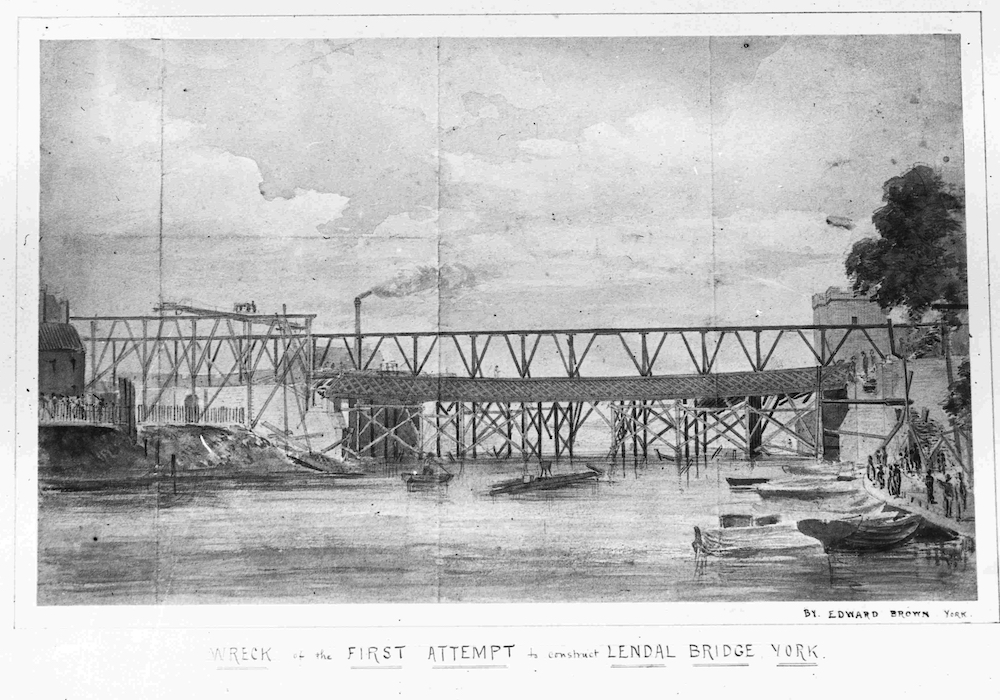
The bridge designed by Dredge, which collapsed before completion. Credit: YAYAS Evelyn Collection.
In 1861 a bridge over the Ouse in this position, a lattice-work structure designed by William Dredge, was nearly finished but collapsed during construction killing five workmen (Murray 1988, 37).
The new bridge
The bridge that replaced it, and that we have today, runs from north-east, on the left bank or Minster side, to south-west, on the right bank or railway station side, but the terms north and south will be used here. Small lodges at either end of the span on the downstream side are now cafes, but were originally toll houses; they were designed in rock-faced gritstone by George Gordon Page, the son of Thomas Page. The bridge was declared free from toll in August 1894, as commemorated in a plaque added to a lamp standard near the Barker Tower (south bank).
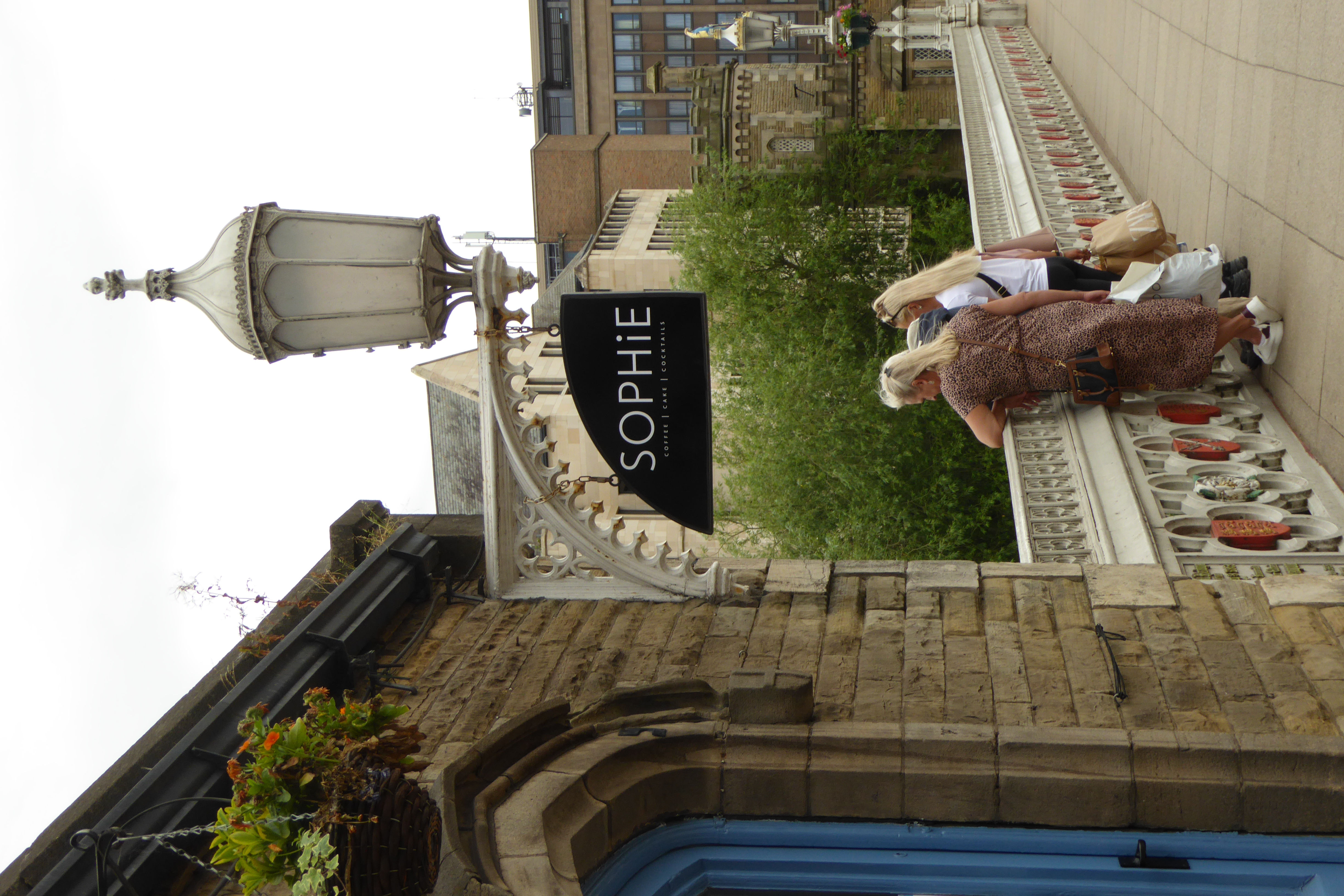
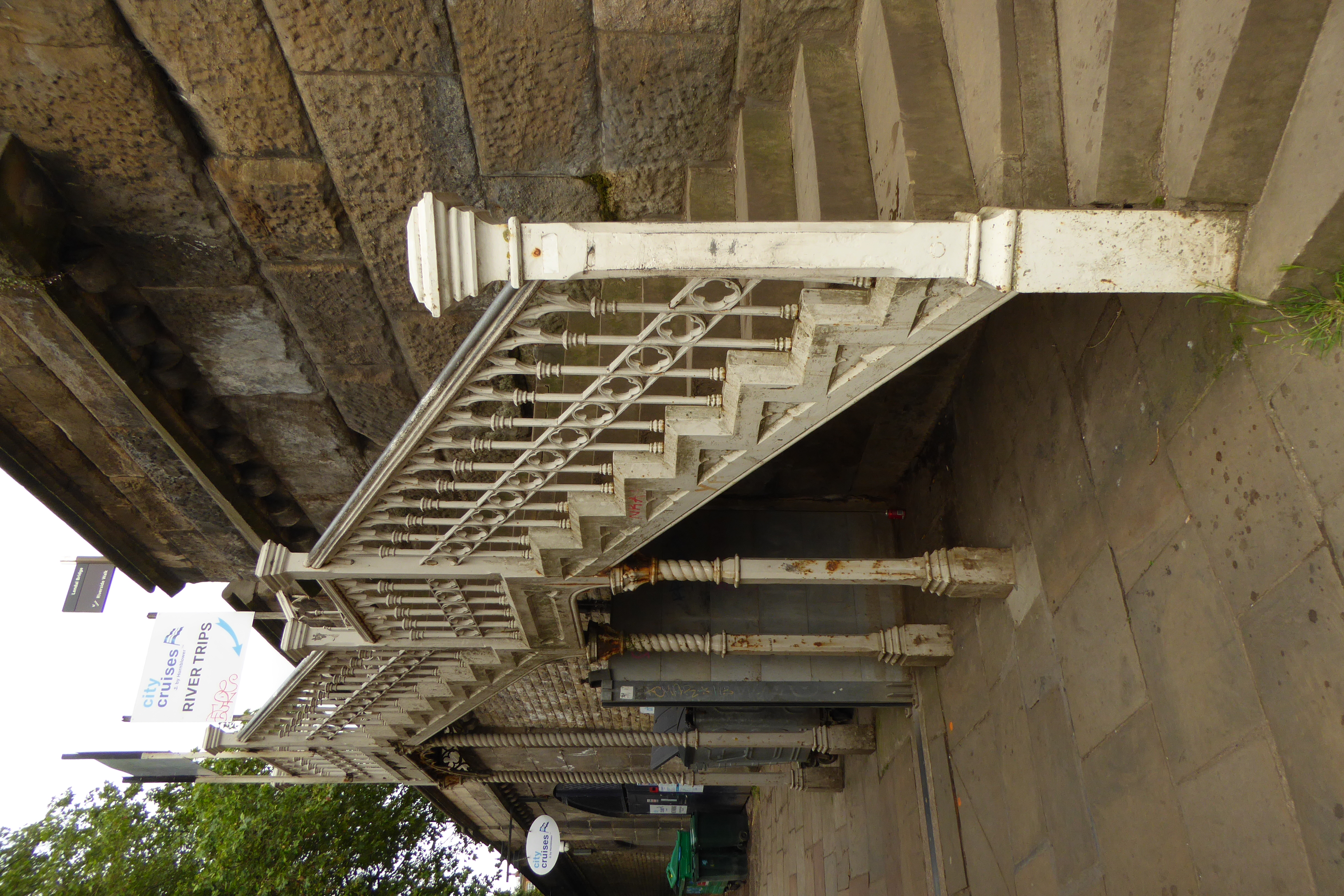
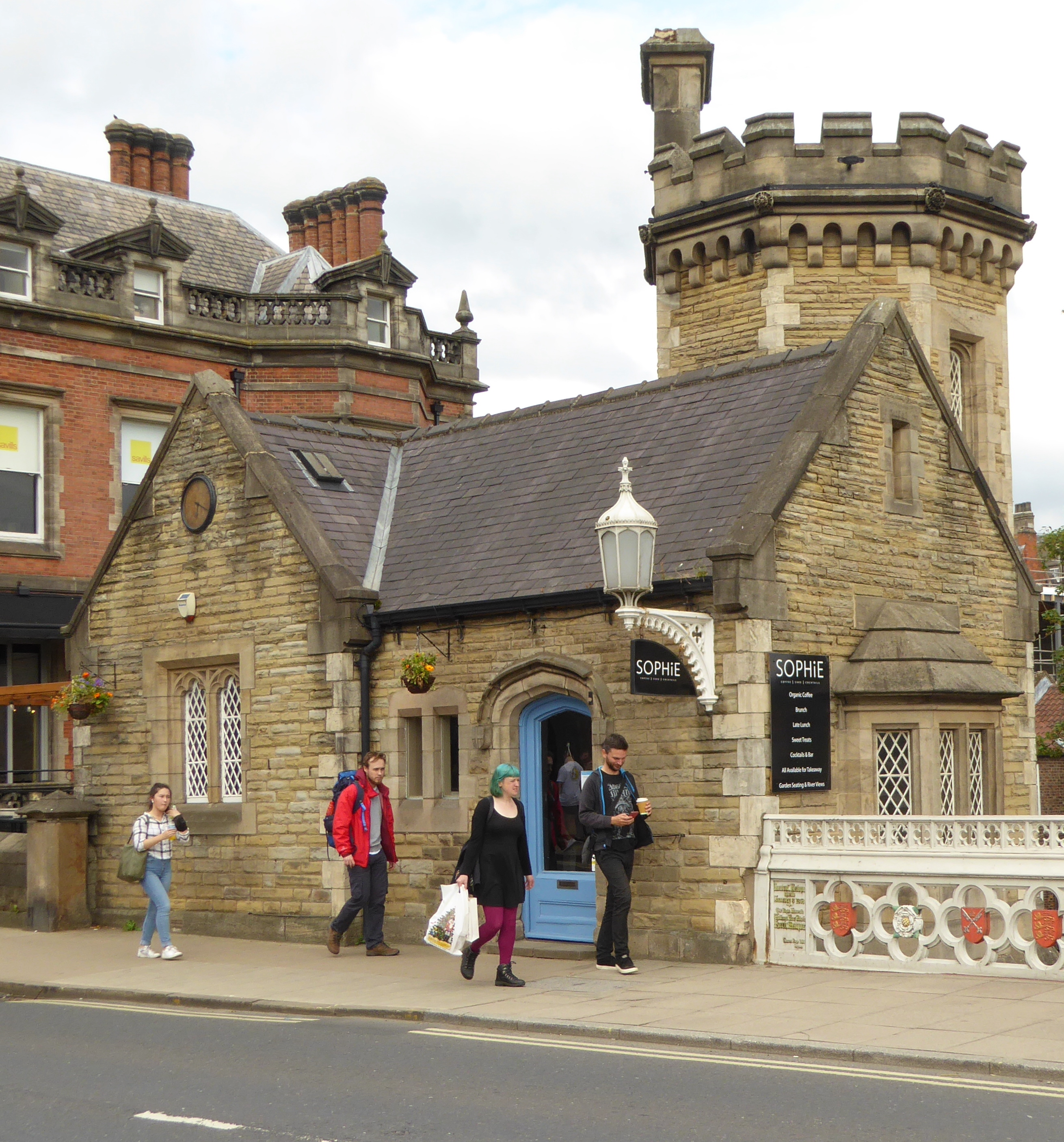
Left to right: (a) Lamp on north toll house, with south toll house beyond. (b) An ironwork staircase on the north side, near Lendal Tower. (c) North toll house seen from the bridge.
Two plaques are part of the original ironwork near to the respective toll houses, the one near the north toll house saying “Lendal Bridge/ opened/ 8th January 1863/ The Right Honorable/ William Fox Clark/ Thomas Page FGS/ engineer”. Page had been a Fellow of the Geological Society since 1843, very suitably for an engineer. The plaque near the south toll house has a dedication in Latin which reads “Gloria Deo in Excelsis [star] Anno Regni Victoria Vicesimo Sexto” (that is, “Glory to God in the highest [star] the twenty-sixth year of the reign of Queen Victoria”).
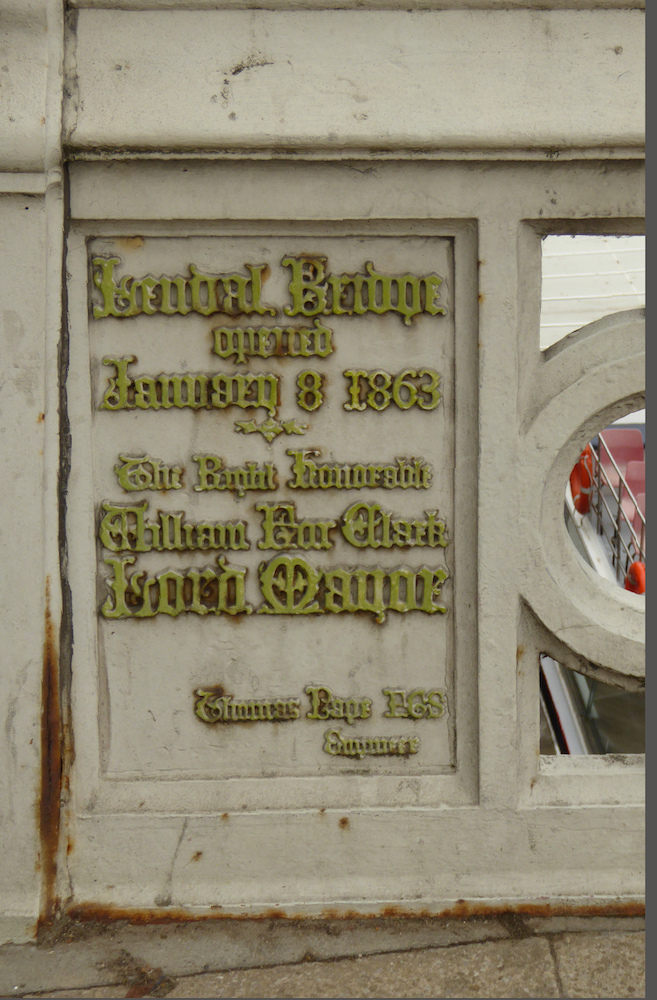
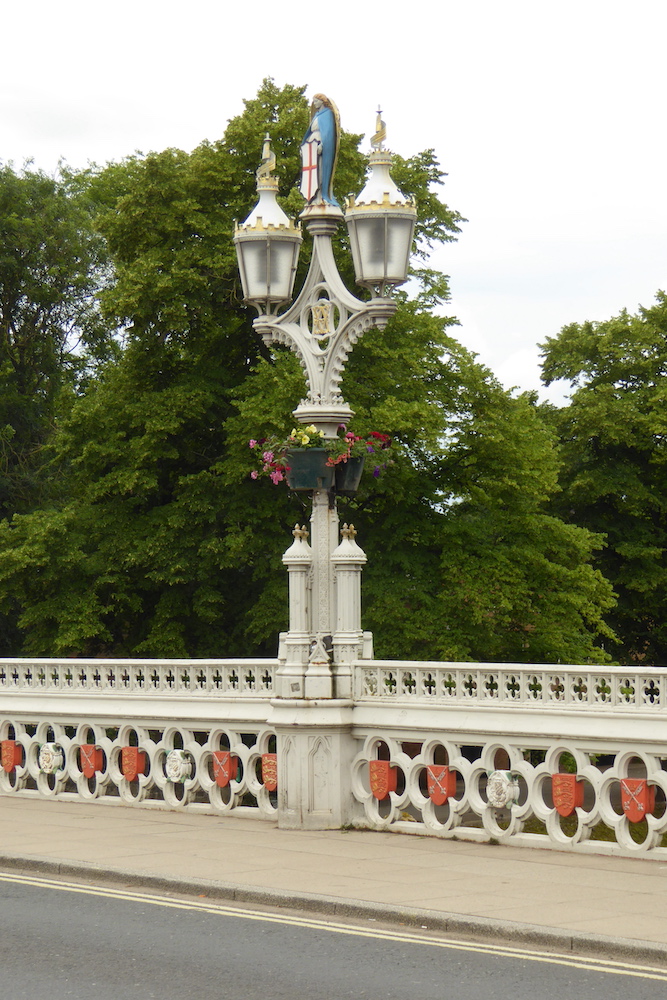
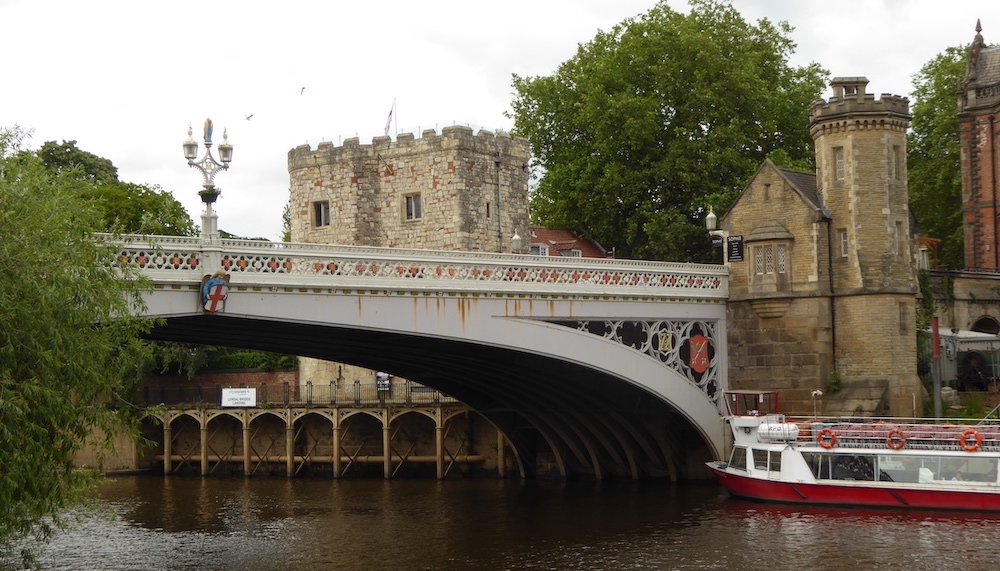
Left to right: (a) Plaque near the north toll house. (b) Lattice work with shields, and double lamp-standard displaying St George's Cross. (c) The riverside walk seen below the bridge.
From Museum Street on the north side, the surface of the roadway is level, then slopes down quite steeply because the south bank is much lower than the north. The abutments in gritstone on the south side are substantial, but also necessary on the north bank as the river itself is well below road level. A neat cast iron stair is provided opposite the north toll house. It leads down to Lendal Tower, the riverside walk and the path formerly used to reach the ferry.
The decorative schemes are colourful. Seen from the street, the screen formed by the white railings with quatrefoils carries a repeating series of three solid motifs, brightly painted red, gold and white; they seem to have been applied in two halves to the basic framework, and so are also seen from the riverside. The motifs represent England (three lions, or the royal arms according to Murray 1985), Yorkshire (the white rose), and the Diocese of York.
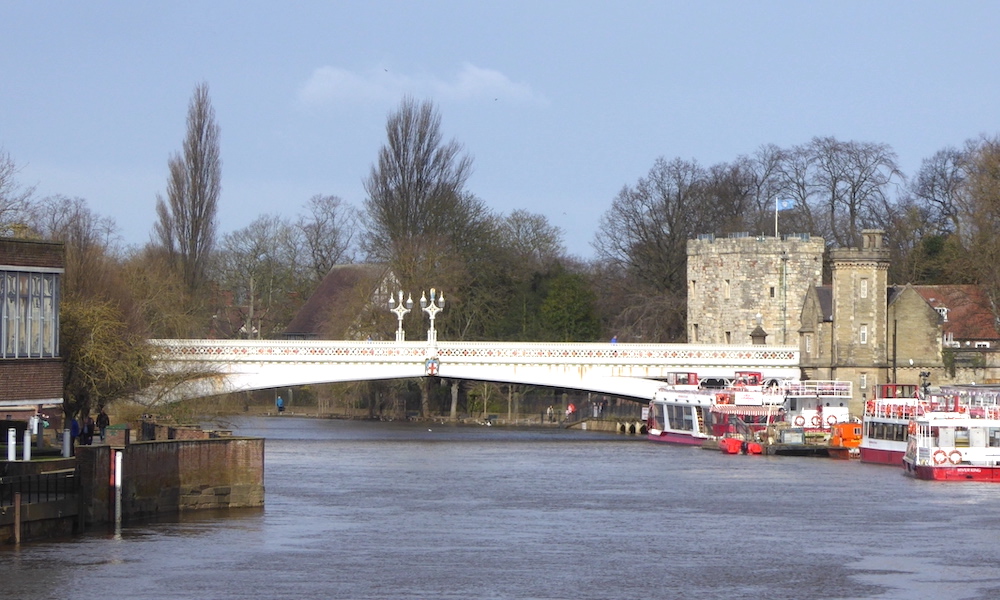
Lendal Bridge seen from the Ouse Bridge.
The arms of the city (a cross with five lions), are used in two of the largest roundels of all, in the spandrels on the left-hand side of the main span seen from the riverside; the diocesan arms are used on the righthand side. Seen from the riverside also is a row of painted and gilded decoration repeating four motifs: V entwined with A (Victoria and Albert); V with R (Victoria Regina); oak foliage and St George’s Cross (or England); V entwined with A is also on the main lamp standards at the centre of the bridge. Prince Albert had died thirteen months before the bridge was opened; similar work is on Westminster Bridge, on which Page collaborated with Sir Charles Barry. The Royal Cipher and date can also be seen on the façade of Heworth Grange in York.
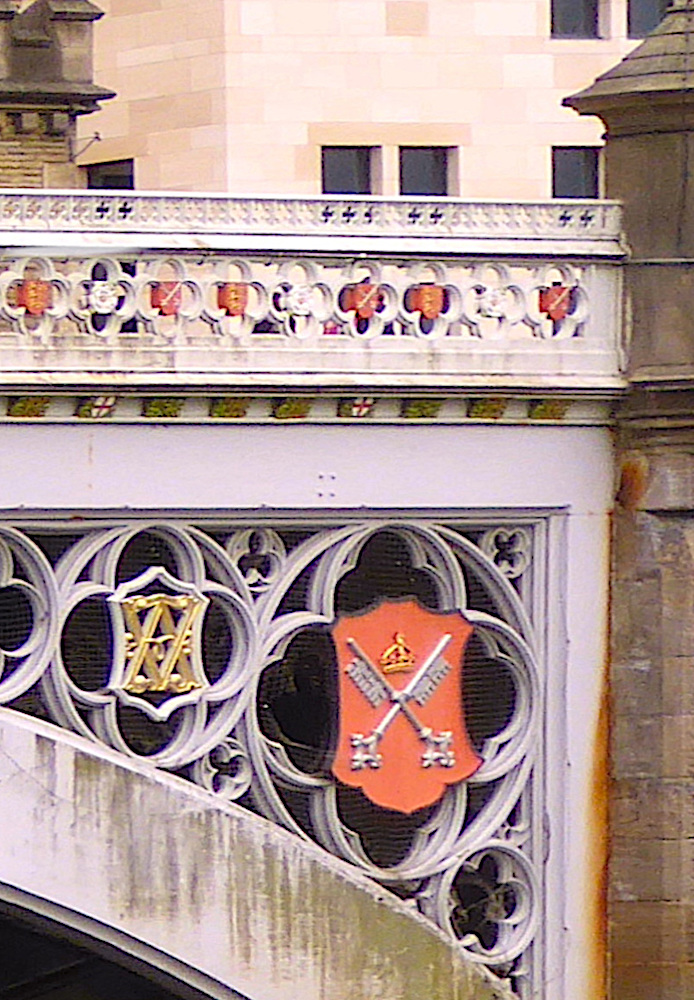
Close-up of the cipher for Victoria and Albert, and the diocesan cros=-keys arms.
There are single lanterns on the stone walls at the entrances to the bridge, brackets with lamps at the toll-houses, and a large standard with two lanterns and a centrepiece in the middle of the bridge on both sides of the road. These are similar designs to the lighting on Westminster Bridge, but York has an angel above the central lights, and another angel on the side facing the river. York’s bridge also has the arms of the York diocese and the Latin dedication plaque mentioned above — ecclesiastical details absent in London.
Note that the appearance of the ironwork is affected by the reflected light from the sky, and the north/south aspect of the bridge. It looks white from the more southerly Ouse Bridge direction when the sun is bright, but seems grey in the first photo because of the cloudy sky and dull, more northerly light. There is a degree of staining, suggesting that the white is now ready for a repaint.
Bibliography
Murray, Hugh. Heraldry of the Buildings of York.[York]: YAYAS 1985.
_____. Nathaniel Whittock’s Bird’s-Eye View of the City of York in the 1850s.. York: Friends of York City Art Gallery 1988.
Pevsner, Nikolaus, and David Neave. Yorkshire: York and the East Riding. New Haven and London: Yale University Press, 2002.
"Thomas Page (1803-1877)." Grace's Guide. Web. 24 August 2021.
Created 24 August 2021
Last modified 16 February 2023 (image added)